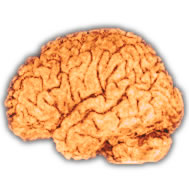Scientists have produced the first comprehensive map of the gene activity in every single part of the healthy human  brain.
brain.
The study, announced this week in Nature, will enable future research studies to look at the genetic basis of different diseases, the ageing process, sex or gender differences and the effects and side-effects of different drugs.
The catchily-titled "brain transcriptome atlas" is the work of an international team of scientists led by Michael Hawrylycz from the Allen Institute for Brain Science in Seattle.
To produce the data, the brains of three previously-healthy donors were initially imaged in an MRI scanner before they were cut into thin sections and examined microscopically and biochemically.
More than 900 neuroanatomically-distinct regions were studied in the brains, including reading the patterns of gene expression in each.
The results were then mapped back onto the imaging data to build an anatomical representation of which genes are active and to what extent in each region.
Apart from generating an open-access tool that research teams internationally can use to further their own neuroscientific studies, in the present work were some surprising initial findings. Like, for instance, the absence of any obvious differences between the equivalent parts of the right and left sides of the brain, despite the obvious compartmentalisation of certain key roles - such as speech and handedness - which are preferentially located together in the left hemisphere of more than 80% of people.
According to Allen Institute study participant Ed Lein, "These results only scratch the surface of what can be learned from this immense data set. We look forward to seeing what others will discover."









Comments
Add a comment